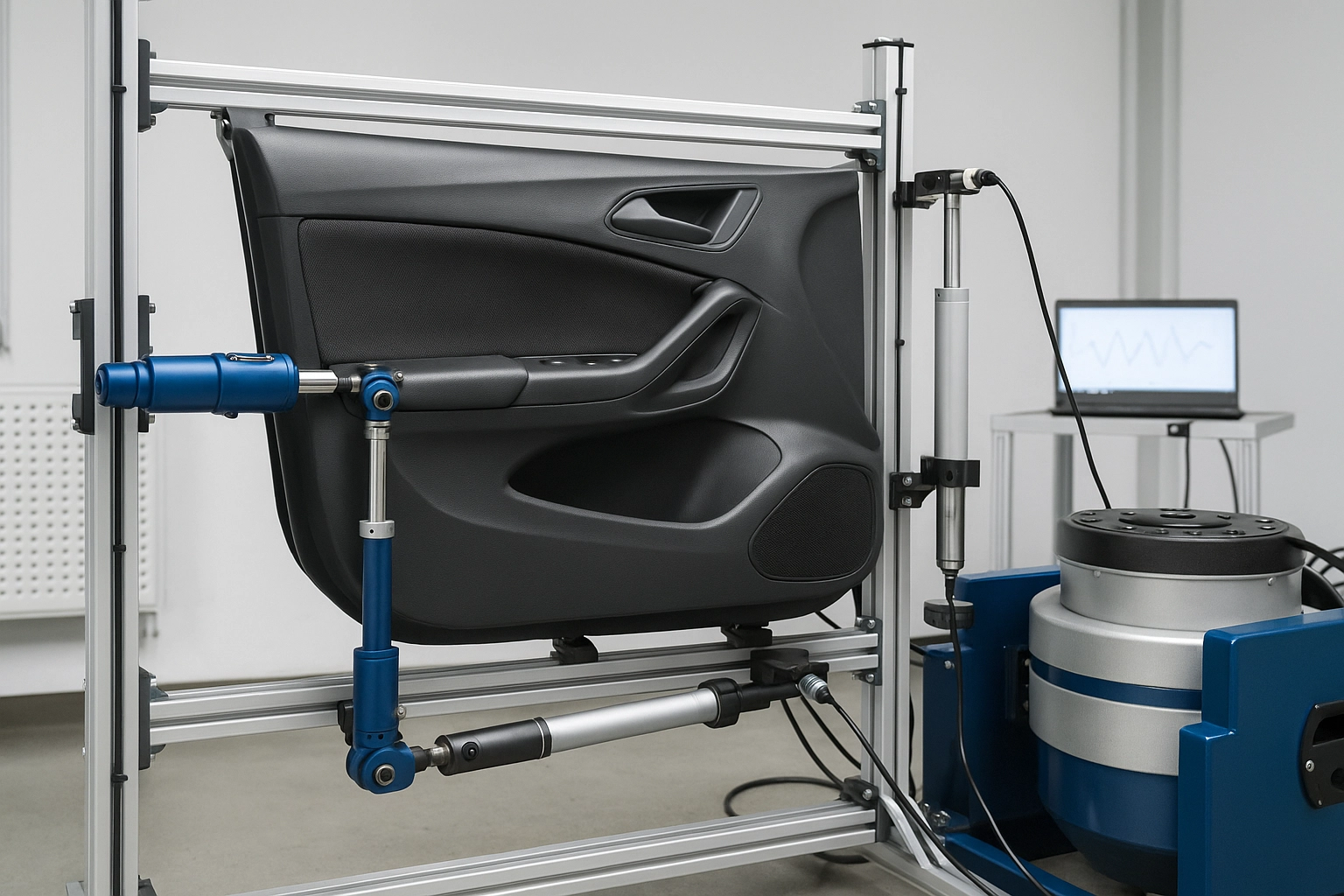UL 94 Plastic Component Resonance and BSR Flammability Test
The UL 94 flame retardant plastic materials standard is one of the most widely used plastics flammability standards in the world. The test evaluates how a material will behave when exposed to an ignition source, offering important insights into its resistance to catching fire or continuing to burn once ignited.
When it comes to automotive components, ensuring that the materials used are safe and compliant is crucial for both product quality and safety. Resonance in plastics can lead to unwanted noises such as buzzes, squeaks, and rattles (BSR). These sounds not only degrade customer experience but may also indicate potential structural weaknesses.
The UL 94 Plastic Component Resonance and BSR Flammability Test assesses the flammability of plastic components and evaluates their resonance properties. This dual assessment ensures that materials used in automotive applications are both safe from fire hazards and do not contribute to noise issues, which can lead to a better driving experience.
The test involves subjecting the plastics to specific temperature conditions followed by a flame exposure for a defined duration. The specimen is then evaluated based on its ability to self-extinguish without melting or dripping. In addition, resonance properties are measured using specialized equipment that captures sound frequencies produced under different loading conditions.
This comprehensive testing approach ensures compliance with industry standards and regulatory requirements while also addressing specific challenges in the automotive sector. By identifying potential issues early in the development process, automakers can make informed decisions about material selection that enhance both safety and performance.
Understanding the properties of plastic components is essential for designing effective solutions that meet current and future market demands. Our laboratory uses advanced instrumentation to accurately measure resonance frequencies and flammability characteristics, providing reliable data that supports decision-making throughout the product lifecycle.
The UL 94 standard plays a critical role in ensuring that automotive parts are safe under various environmental conditions, including high temperatures encountered during operation or accidental exposure to fire hazards. By adhering to these stringent requirements, manufacturers can build confidence among consumers regarding their products' reliability and longevity.
Why Choose This Test
- The UL 94 test ensures that plastic components meet rigorous flame retardancy criteria, which is essential for automotive safety.
- The resonance measurement helps identify potential noise issues early in the design process, enhancing overall driving experiences.
- Compliance with industry standards and regulations reduces the risk of recalls or legal actions.
- The test provides valuable insights into material performance under different environmental conditions, aiding informed decision-making for manufacturers.
- Makes use of advanced instrumentation to accurately measure both flammability and resonance properties.
- Offers reliable data that supports product development and quality assurance processes.
- Ensures consistent results across multiple batches or production runs through standardized testing protocols.
Competitive Advantage and Market Impact
- By meeting UL 94 requirements, companies can differentiate their products by offering safer alternatives to consumers.
- The ability to minimize noise issues contributes significantly to maintaining a positive brand image among end users.
- Early identification of material shortcomings through this testing ensures timely adjustments in the supply chain, reducing costs associated with post-production modifications.
- Increases market share by establishing trust and reliability within competitive landscapes.
- Facilitates quicker entry into new markets where stringent safety regulations apply.
- Promotes innovation by encouraging continuous improvement in material selection practices based on scientific evidence derived from this testing method.
Use Cases and Application Examples
| Application | Description |
|---|---|
| Interior Trim Panels | These components are exposed to various environmental factors including heat from vehicle systems. Ensuring they pass the UL 94 test guarantees safer interiors. |
| Fuel Tanks | Given their proximity to fuel sources, any ignition could have serious consequences. Testing for both flammability and resonance ensures safety. |
| Electrical Connectors | These parts are critical in maintaining proper functionality of electronic systems within vehicles. Compliance with UL 94 helps prevent malfunctions due to overheating or fire risks. |
| Seat Parts | Safety is paramount when it comes to seating components. The UL 94 test ensures that materials used are resistant to catching fire, protecting passengers in case of accidents. |





